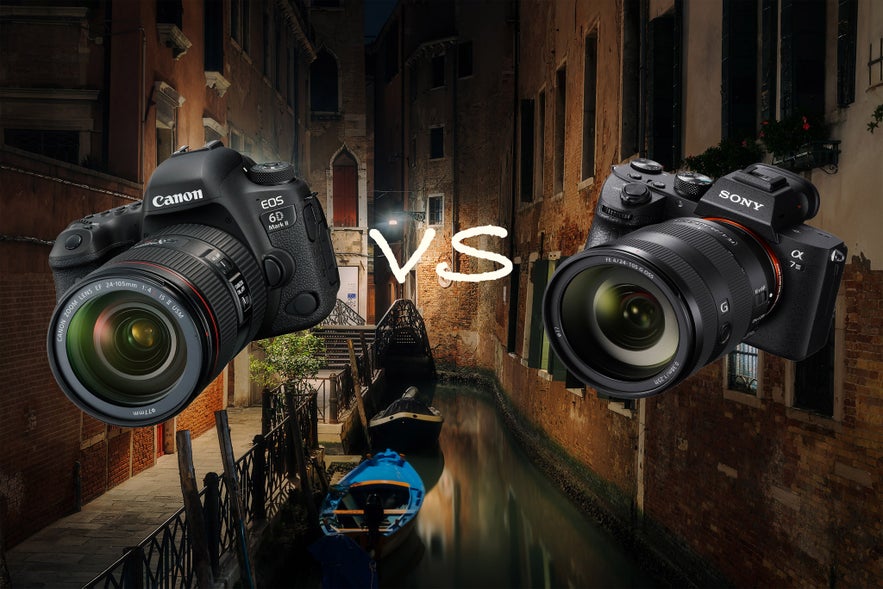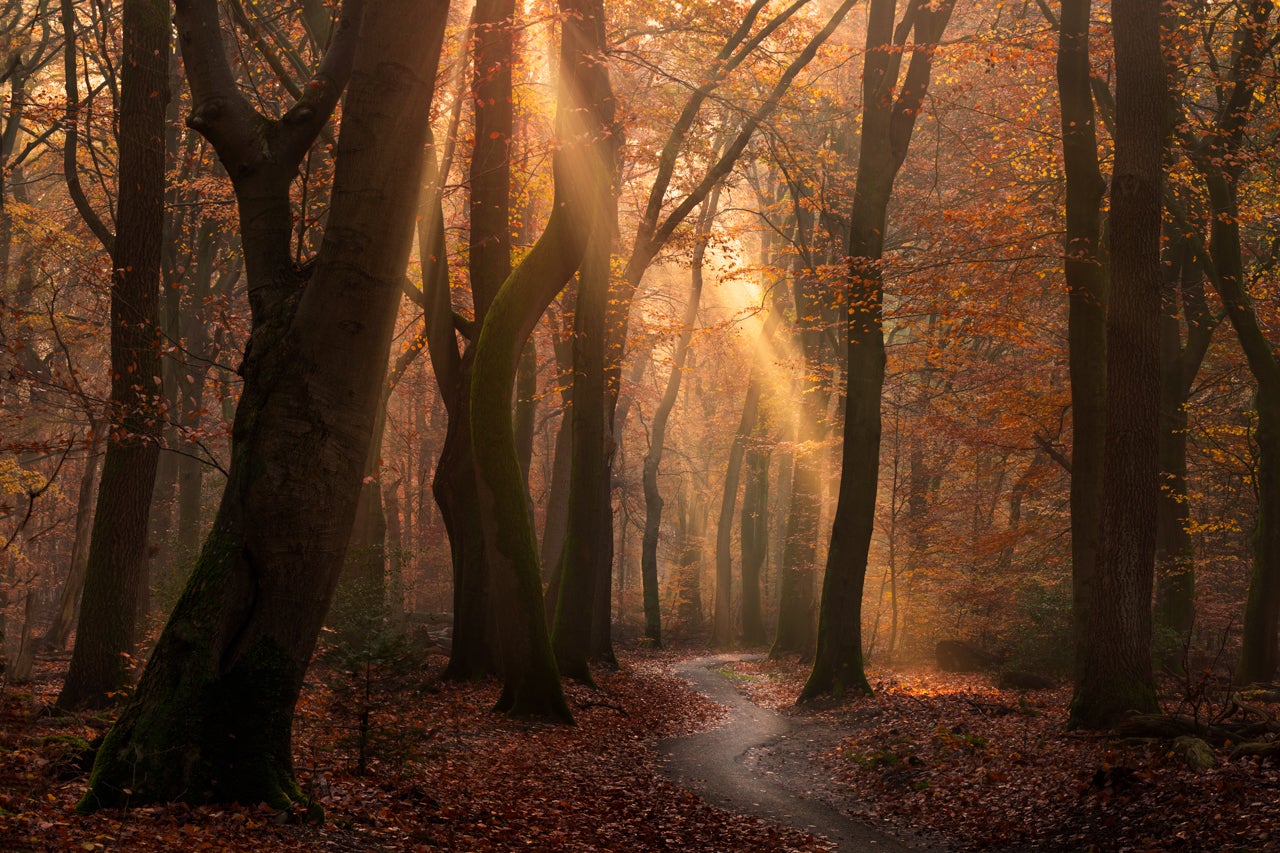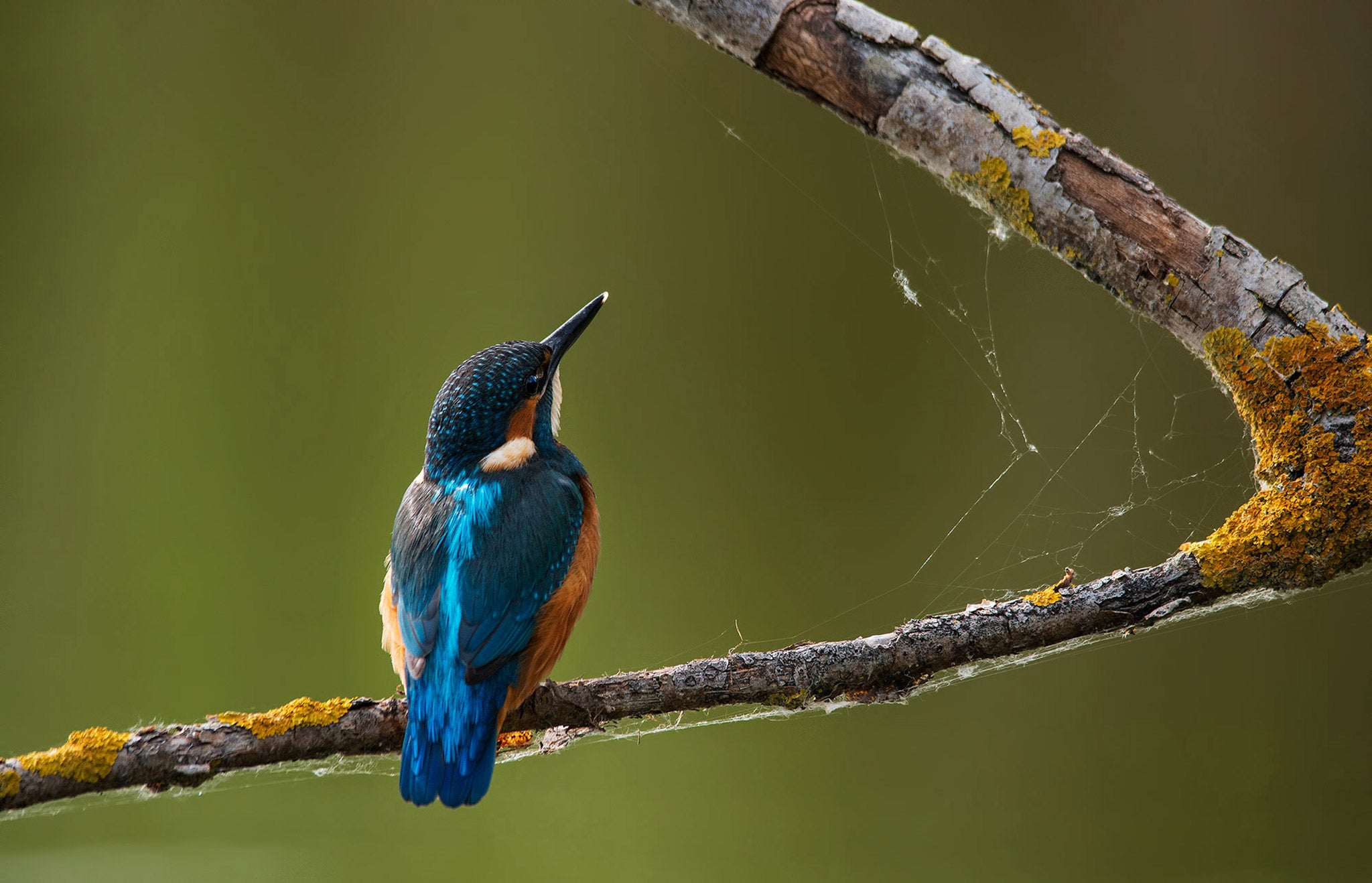
“The times they are a-changin'", like Bob Dylan would say. That’s what is happening at the moment in the photography world. In the last decade (or even less!), we have seen the rise of “mirrorless” cameras, and the set back of the DSLR reflex domination.
- Here is the Beginner's Guide to Medium Format Photography
- Check out these Camera and Gear Reviews
- Discover The Best Camera Bags for 2020
Sony, which has probably been the real first mover in the mirrorless market, has just surpassed Nikon in sales to become the world's second biggest camera manufacturer, just behind Canon. The mirrorless cameras, which until just a few years ago were a “toy” for some tech enthusiasts, have now become the main work tool of many professional photographers.
This is not some huge marketing move anymore. This is not the ego of some tech producer either. Mirrorless cameras these days offer an equally valid alternative to good old reflex cameras. It’s time for everybody to recognise it and to make a wise choice when selecting a new camera body for photography.
In this article, I'll share some information with you about the differences between mirrorless and DSLR cameras, which will hopefully assist you in making a decision as to which camera will best suit you when the time to invest in new equipment comes.
What is a DSLR Camera?
DSLR stands for “digital single-lens reflex”. With these types of cameras, the light that passes through the lens will hit a mirror that sends the image to the viewfinder (or the digital sensor, in case you’ve clicked the shutter button).
 The Nikon D850 is an example of a DSLR camera. Photo by: 'Leonardo Papèra'.
The Nikon D850 is an example of a DSLR camera. Photo by: 'Leonardo Papèra'.
So, the “optical viewfinder”, one of the most popular features of DSLR cameras, is basically the real scene (as seen through the lens), just reflected on a mirror. There are no LCD screens or any lag in the viewfinder, so what you see is what you’ll shoot if you press the shutter button.
A few examples of DSLR cameras currently on the market are the Nikon D850 (the one above in photo), the Canon EOS 6D Mark II, the Nikon D750, the Canon EOS 5D Mark IV, the Nikon D3500 or the Canon EOS 4000D.
- See also: Best Lenses for Night Photography
What is a Mirrorless Camera?
As the name suggests, the most important difference between DSLR and mirrorless cameras is the lack of a mirror in the latter. How can they work without the mirror that reflects the light coming through the lens and into the viewfinder? Simple: the optical viewfinder doesn’t exist on mirrorless cameras, as it has been replaced by an electronic one. So, instead of seeing the scene as reflected on the mirror, you’ll see it from an LCD screen that will show you what the camera sensor is capturing.
 The Sony A7 Series are all mirrorless cameras. Photo by: 'Leonardo Papèra'.
The Sony A7 Series are all mirrorless cameras. Photo by: 'Leonardo Papèra'.
This is obviously not the only difference between DSLR and mirrorless cameras but it is the main thing that differentiates the two types of cameras.
A few examples of mirrorless cameras are the Sony a7 series (a7, a7r and a7s), the Sony a9, the Nikon Z series (Z50, Z6, Z7) and the Canon R series (R, RP).
How Does a Mirrorless Camera Work?
When the light passes through the lens of a mirrorless camera, it is recorded and shown to you through an electronic screen, rather than being reflected onto a mirror and into your eye.
 A mirrorless camera shows you an electronic representation of the scene. Photo by: 'Leonardo Papèra'.
A mirrorless camera shows you an electronic representation of the scene. Photo by: 'Leonardo Papèra'.
At the very beginning of the rise of mirrorless cameras, one of the biggest problems that manufacturers faced was how to eliminate the time lag produced by the transmission of data; it was really annoying to see what the camera was pointing at a bunch of milliseconds too late. Now with the newer models, the problem has been basically completely solved and no lag is visible anymore. In some models, it’s hard to even recognise if you are looking at an LCD screen or at the reflected image in the mirror through the glass.
What is the Difference Between a Mirrorless and DSLR camera?
Let's go into an in-depth comparison of DSLR and mirrorless cameras. As for many other things in the photography world, I can already tell you that there is not a winner or a loser, nor is there a better or worse one – there is just what will suit your needs best and what won’t.
Size
Let’s start by the first thing you’ll notice in a comparison between the two types of cameras, even before holding them in your hands: the size. Mirrorless cameras, thanks to the lack of the mirror and the overall simpler mechanisms, are visibly smaller when compared to DSLRs.
It goes without saying that if you practice a photography genre where you need to be discreet or if you are trying to save as much space as possible in your bag, mirrorless cameras are the way to go. If the feeling of robustness and sturdiness is what you are after, then you should definitely go for a DSLR.
- See also: Namibia Wildlife Photography Tour
Weight
The second thing you’ll notice, once you hold both cameras in your hands, is the difference in terms of weight: again, for the very same reason of size, mirrorless cameras are lighter than DSLRs. The difference can vary depending on which models are you comparing but it can stretch from 200g to around 500g.
My tip is the same as for the previous point: half a kilogram less on your shoulders/neck is not a bad thing, so if you need to carry your equipment for a long time, mirrorless might be the best choice.
 DSLRs can be heavy when you're climbing mountains or hiking a lot in-field. Photo by: 'Leonardo Papèra'.
DSLRs can be heavy when you're climbing mountains or hiking a lot in-field. Photo by: 'Leonardo Papèra'.
Sensor Size
Even if mirrorless cameras are lighter and smaller than the DSLRs, the size of the sensor remains unvaried. You can still choose between the APS-C format (with the 1.5x crop factor) and the classic 35mm FF (full-frame) format. There won’t be any difference between a full frame mirrorless camera and a full frame DSLR camera in terms of sensor size, so it shouldn’t influence your choice.
Autofocus Speed
At the beginning, one of the major flaws of mirrorless cameras was the contrast detection method to make the autofocus work. Basically, with a number of focus points placed under the sensor, the camera was just using the contrast as the only landmark to focus (it wasn’t working well, especially in low light conditions where the contrast was not high).
On the other hand, the autofocus function on a DSLR camera used the convergence of two light rays to measure the focus. This was a much more developed and trustworthy phase detection method.
These days, this difference is non-existent. Most mirrorless cameras have implemented the same phase detection method as DSLRs, together with the contrast detection autofocus. With two different autofocus methods working in tandem, the autofocus on mirrorless cameras is even more accurate than before.
Image Stabilisation
The “piece de resistance” of mirrorless cameras since the moment that they became available has always been the in-camera image stabilisation. In the DSLR world, when you talk about image stabilisation, you are mostly referring to the stabiliser on lenses because there are very few cameras with built-in stabilisation.
On mirrorless cameras though, you have the chance to use the stabilisation both on your camera and on your lenses, so the chances to capture razor sharp pictures are higher!
Previewing Images
DSLR cameras, through their optical viewfinder, will be able to show you exactly what you're going to shoot. On the other hand, mirrorless cameras show you an image on a screen, so they will behave similarly to DSLRs in good lighting conditions but may have a hard time doing that when shooting in low light or at night. Why? Because the camera needs time to record the details of the scene since it's dark, while giving you a real-time preview at the same time of where you are pointing your camera.
 The preview function on mirrorless cameras can be a bit slow. Photo by: 'Leonardo Papèra'.
The preview function on mirrorless cameras can be a bit slow. Photo by: 'Leonardo Papèra'.
Sound
Since there is no mirror that lifts up when the camera is about the take the shot, mirrorless cameras are quieter than DSLRs. While many of them still have a mechanical shutter which still makes some noise, a bunch of them also have an electronic shutter so you won’t hear a single sound when using them. DSLR cameras are overall much more noisy when compared to mirrorless cameras.
Video Quality
Since they came out, mirrorless cameras have always been marketed not just for photographers but also for videographers. The mirrorless cameras can be credited with introducing 4K videos onto the camera market and the live view focus when filming works better overall when compared to DSLR cameras. The latter can’t use the phase detection focus method when they have the mirror up, which can create a few issues with the focus during the recording of the video.
Still, even though mirrorless generally behave better when used for video recording, professional videographers still tend to prefer DSLRs for the wider choice of lenses available for these types of cameras.
Shooting Speed
Mirrorless cameras have a physical advantage when talking about maximum frames per second: the lack of the mirror. Since they don’t have to move the mirror up and down after each shot, they can easily take more shots than DSLRs. In an equal comparison between same price-range camera models, the mirrorless camera will probably win in terms of maximum FPS (frames per seconds) against the DSLR camera.
Battery Life
Unsurprisingly, the lightness and portability of the mirrorless cameras comes with a cost: the battery life. The reasons are pretty obvious: DSLRs have more space inside them and the batteries are bigger. Meanwhile, mirrorless cameras always have a screen turned on, which drains the battery. With DSLRs, if you don’t use the Live View function, then you’ll just be working with a glass and a mirror, nothing electronic.
Until a few years ago, the battery life gap between mirrorless and DSLR cameras was huge. These days, mirrorless cameras have managed to thin that gap by optimising their battery consumption.
 Battery life is a major thing in the world of landscape photography. Photo by: 'Leonardo Papèra'.
Battery life is a major thing in the world of landscape photography. Photo by: 'Leonardo Papèra'.
Durability
Both types of cameras can offer a high level of durability: it is not about mirrorless or DSLR here, it is more about which model of camera you are interested in and what use you’ll make of it. Obviously, if you’ll be outside a lot, battling against the elements, I’d recommend a weather sealed camera to have some extra protection, whether that's a mirrorless or DSLR!
Lenses and Accessories
In this case, DSLR cameras will score a point; they still have a wider, more extensive range of lenses and accessories. Mirrorless cameras are still “young”, so it’s not easy for manufacturers to build up an entirely new park of lenses and dedicated accessories for them. With time they probably will, as they are already quickly catching up but for now, the gap is still solid.
Do Professionals Use Mirrorless Cameras?
The truth is that in a moment of changes like this one, it’s hard to provide a direct answer to a question like this. There are professionals who are already convinced that mirrorless cameras are the way of the future and who have already invested plenty of money into the new systems. Meanwhile, other photographers are still reluctant to accept these new types of cameras and still consider them nothing more than “toys”.
 More and more professional photographers are using mirrorless cameras these days. Photo by: 'Leonardo Papèra'.
More and more professional photographers are using mirrorless cameras these days. Photo by: 'Leonardo Papèra'.
The percentage of the two different kinds of photographers depends on the photographic genre you are looking at: in landscape photography for example, the number of professionals who have switched from DSLR to mirrorless has sharply increased in the last 3 to 4 years, while in wildlife or action photography (sports for example), the percentage of professionals is lower than in landscape. This is because DSLRs still have a wider range of lenses and a longer battery life, which are both fundamental when it comes to “carpe diem”.
- See also: How to Get Creative with a Fisheye Lens
Will Mirrorless Replace DSLR?
Whether you like it or not, they probably will. Not in 2020 and perhaps not in 2021 but in the longer term, they most likely will. The entire mirrorless ecosystem (mechanisms, operating system, apps, etc) is simpler to build for manufacturers and allows for some big improvements in the future of the photography world (see the in-camera stabilisation for example. Overall, it suits the time in which we are living in much better than the reflex cameras, with apps and a much more “connected” system.
 Mirrorless cameras will probably be the way of the future. Photo by: 'Leonardo Papèra'.
Mirrorless cameras will probably be the way of the future. Photo by: 'Leonardo Papèra'.
Should you be worried if you just bought a DSLR reflex or if you are about to buy one? No, absolutely not. What I wrote is about a not-so-close future since for now, DSLR cameras are still getting their big piece of the cake in the photography world. At the moment, all you should think about when buying a new camera are your needs: if mirrorless cameras suit your needs better, then go for them, otherwise you’ll still have DSLRs as a back-up option.
 Choose a camera based upon your own needs. Photo by: 'Leonardo Papèra'.
Choose a camera based upon your own needs. Photo by: 'Leonardo Papèra'.
Conclusion
As I wrote around the beginning of the article, there is not an absolute winner or an absolute loser; both mirrorless and DSLR cameras have their pros and cons. Only you can decide what you want to “settle down” for.
In the end, always remember that most of the time, it doesn’t matter what type of camera you are using. Rather, you should aim to be at the right place at the right time in order to capture great photos. My personal advice is to focus more on improving your photography skills rather then spending too much energy looking over and over for the best camera ever!
About the author: Leonardo Papèra is a landscape and nature photographer based in Italy. You can find more of his work on his website or by following him on Instagram.
Do you have a mirrorless or a DSLR camera? Which features do you expect to come out with new camera technology in the future? Do you think DSLR cameras will still have a place a few years from now? Leave your thoughts below!











